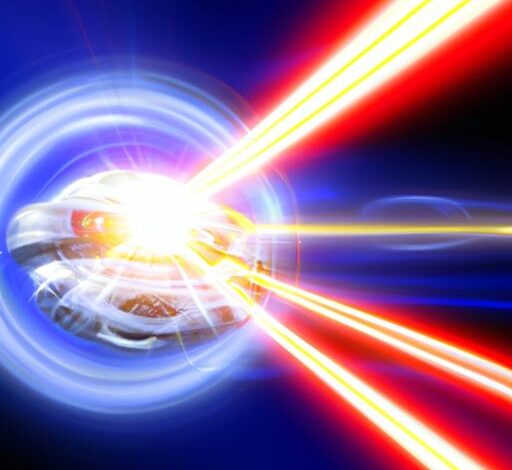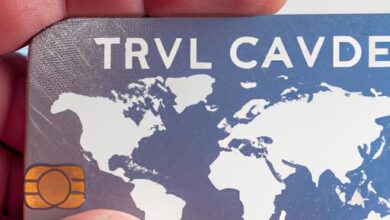What Travels Faster Than Light: Unlocking the Secrets of Cosmic Speed

In the vast expanse of the cosmos, one fundamental concept governs the very fabric of reality: the speed of light. As we delve into the mysteries of physics, we are continuously fascinated by this cosmic limit and its profound implications. Today, let’s embark on a journey to explore the enigmatic question: “what travels faster than light?”
The Cosmic Speed Limit and its Significance
Before we dive into the realm of faster-than-light travel, let’s grasp the concept of the speed of light and its significance in physics. In the early 20th century, Albert Einstein revolutionized our understanding of the universe with his theory of relativity. One of its pivotal tenets is that the speed of light is the ultimate speed limit that cannot be surpassed by any object or information.
This fundamental principle has far-reaching consequences. It not only shapes our understanding of the cosmos but also underpins technologies like GPS and the internet. The speed of light serves as a universal constant, providing a fundamental framework for the laws of physics.
Unveiling the Mystery: “What Travels Faster Than Light?”
Now, let’s embark on an exploration of theoretical possibilities that challenge the cosmic speed limit. From the realm of science fiction to cutting-edge scientific theories, various concepts have emerged that propose faster-than-light travel. These concepts captivate our imagination and push the boundaries of scientific understanding.
One such intriguing concept is the existence of wormholes, hypothetical tunnels that could connect distant parts of the universe. These cosmic shortcuts could potentially allow us to traverse vast cosmic distances faster than light. Another fascinating idea is the notion of warp drives, which would manipulate spacetime, enabling faster-than-light travel within a localized region.
Furthermore, scientists have theorized the existence of hypothetical particles called tachyons, which are believed to travel faster than light. While the existence of tachyons is purely theoretical, their potential implications for faster-than-light travel continue to fuel scientific discourse.
As we delve deeper into this captivating topic, we will unravel the controversies, limitations, and recent scientific advancements that shed light on the possibilities of surpassing the cosmic speed limit.
Stay tuned as we embark on a scientific odyssey to explore the frontiers of physics and uncover the secrets of what may lie beyond the cosmic speed limit. Together, let’s unlock the mysteries of faster-than-light travel and expand our understanding of the universe.
The Speed of Light: A Cosmic Limit
The Universal Speed Limit
In the vast tapestry of the cosmos, the speed of light stands as an immutable constant, shaping the very fabric of reality. According to our current understanding, light travels at a mind-boggling speed of approximately 299,792 kilometers per second (or about 186,282 miles per second) in a vacuum. This extraordinary velocity serves as the cosmic speed limit, beyond which no object or particle can traverse.
Einstein’s Theory of Relativity and Light Speed
To comprehend the significance of the cosmic speed limit, we must delve into the profound insights of Albert Einstein’s theory of relativity. This groundbreaking theory, formulated over a century ago, transformed our understanding of space, time, and the interplay between them.
Einstein’s theory encompasses two main components: the theory of special relativity and the theory of general relativity. The former, formulated in 1905, introduced the notion that the laws of physics are invariant under different observers moving at constant velocities relative to each other. Central to special relativity is the concept that the speed of light remains constant for all observers, regardless of their relative motion.
This revolutionary insight shattered the long-held belief in an absolute reference frame and led to the realization that space and time are not separate entities but rather interwoven into a single four-dimensional fabric known as spacetime. The constancy of light speed serves as a cornerstone of special relativity, with profound implications for our understanding of causality, time dilation, and the nature of reality itself.
Building upon special relativity, Einstein’s theory of general relativity, formulated in 1915, extended the principles of special relativity to include gravity. It revealed that massive objects, such as planets or stars, bend the fabric of spacetime, causing the paths of light rays to curve. This fascinating interplay between matter and spacetime curvature further reinforces the cosmic speed limit, as even light cannot escape the gravitational pull of massive objects.
By unraveling the mysteries of the speed of light and its connection with relativity, we gain a deeper appreciation for the profound impact of Einstein’s theories on our understanding of the universe. These fundamental principles form the bedrock of modern physics and lay the groundwork for exploring the tantalizing possibilities of faster-than-light travel that we will delve into in the following sections.
Theoretical Possibilities: Faster-than-Light Travel
Exploring Hypothetical Models
In the quest to understand and potentially surpass the speed of light, scientists and theorists have put forth various hypothetical models and hypotheses. These conceptual frameworks offer tantalizing possibilities that challenge our current understanding of physics.
Wormholes: Cosmic Shortcuts
One fascinating concept that has captured the imagination of both scientists and science fiction enthusiasts is the idea of wormholes. These hypothetical tunnels in spacetime could potentially connect distant parts of the universe, allowing for faster-than-light travel. By creating a shortcut through the fabric of spacetime, wormholes present a tantalizing possibility for traversing vast cosmic distances in a fraction of the time it would take at the speed of light.
Warp Drives: Manipulating Spacetime
Another intriguing notion is the concept of warp drives. Popularized by science fiction, warp drives involve the manipulation of spacetime to achieve faster-than-light travel. By contracting space in front of a spacecraft and expanding it behind, a warp bubble is created, effectively allowing the vessel to move faster than the speed of light within this localized region. While warp drives remain purely speculative, scientists continue to explore the theoretical frameworks and possibilities surrounding this concept.
The Enigma of Tachyons
Within the realm of theoretical physics, the existence of tachyons has been postulated. Tachyons are hypothetical particles that are believed to travel faster than light. Although tachyons have not been observed or detected, their potential implications for faster-than-light travel have sparked intense scientific debate. The existence of tachyons would challenge our fundamental understanding of causality and the nature of time itself.
As we delve further into these theoretical possibilities, we encounter mind-bending concepts that stretch the limits of our imagination. While these models and hypotheses offer intriguing avenues for exploration, it is important to note that they currently reside within the realm of speculation and theoretical frameworks. However, the pursuit of understanding faster-than-light travel continues to inspire scientists and drive advancements in our understanding of the universe.
Stay with us as we navigate the labyrinthine paths of theoretical physics, seeking answers to the captivating question of what may lie beyond the cosmic speed limit. Together, let’s explore these extraordinary concepts and expand our horizons of knowledge.
Challenging the Limit: Quantum Entanglement
Unraveling the Phenomenon of Quantum Entanglement
In our quest to explore possibilities that challenge the cosmic speed limit, we encounter a mind-boggling phenomenon known as quantum entanglement. At the heart of quantum mechanics, this mysterious concept brings us tantalizingly close to the prospect of faster-than-light communication.
Quantum entanglement occurs when two or more particles become intricately linked, regardless of the distance between them. These entangled particles, known as quantum states, share a unique connection that defies classical notions of physics. This connection persists even if the particles are separated by vast cosmic distances, implying an instantaneous correlation between their states.
Implications for Faster-Than-Light Communication
The fascinating aspect of quantum entanglement is that any change in the state of one entangled particle instantaneously affects the state of its entangled partner, regardless of the spatial separation between them. This instantaneous correlation seemingly defies the constraints imposed by the speed of light.
While it is essential to note that quantum entanglement does not allow direct information transfer, it opens up intriguing possibilities for faster-than-light communication protocols. By manipulating the states of entangled particles, scientists have demonstrated the potential for secure and instantaneous communication channels that could surpass the limitations imposed by the speed of light.
Recent Scientific Experiments and Discoveries
In recent years, the field of quantum entanglement has witnessed remarkable progress, bolstering our understanding of this phenomenon and its applications. Scientists have conducted groundbreaking experiments that showcase the potential of quantum entanglement for faster-than-light communication.
For instance, in 2020, a team of researchers successfully transmitted entangled photons between two Canary Islands separated by 144 kilometers of distance. This experiment demonstrated the preservation of entanglement over a considerable distance, paving the way for future advancements in quantum communication.
Moreover, scientists continue to explore the intricacies of quantum entanglement through experiments involving entangled ions, superconducting circuits, and even entire quantum networks. These endeavors push the boundaries of our knowledge and bring us closer to harnessing the power of quantum entanglement for faster-than-light communication.
As we delve deeper into the realm of quantum entanglement, we unveil a world of possibilities that challenges the cosmic speed limit. While further research and technological advancements are needed, quantum entanglement holds promise as a potential avenue for transcending the boundaries of light speed and ushering in a new era of communication and exploration.
Controversies and Limitations
Arguments Against Faster-Than-Light Travel
While the concept of faster-than-light travel may ignite our imagination, it is not without its fair share of skepticism and challenges. Let’s explore some of the key arguments against this intriguing possibility.
Einstein’s Theory of Relativity
The cornerstone of modern physics, Einstein’s theory of relativity, has stood the test of time and remains a fundamental pillar of our understanding of the universe. According to this theory, the speed of light is an absolute limit, and surpassing it would violate the very fabric of spacetime. Critics argue that any concept proposing faster-than-light travel would require a radical reimagining of our current understanding of physics.
Energy Requirements and Exotic Matter
Theoretical models that suggest faster-than-light travel often rely on the existence of exotic matter or negative energy densities. However, the existence and practicality of such matter are still highly speculative and unproven. Critics contend that the energy requirements and the exotic nature of the matter needed to manipulate spacetime in such ways may be insurmountable challenges.
Scientific Consensus and Skepticism
The scientific community remains divided on the feasibility of faster-than-light travel. While some researchers continue to explore theoretical possibilities and push the boundaries of our understanding, others approach the topic with caution and skepticism.
Lack of Empirical Evidence
One of the main reasons for skepticism surrounding faster-than-light travel is the lack of empirical evidence. Despite ongoing scientific research, no experimental results or observations have definitively demonstrated the existence or practicality of surpassing the speed of light.
Theoretical Inconsistencies
Critics argue that many proposed models of faster-than-light travel, such as wormholes or warp drives, contain theoretical inconsistencies or paradoxes. These inconsistencies raise concerns about the plausibility and viability of these concepts.
As the quest to unlock the mysteries of faster-than-light travel continues, the scientific community engages in rigorous debate, exploring the boundaries of our knowledge and challenging established theories.
In the next section, we will delve into the fascinating realm of quantum entanglement and its potential implications for communication that appears to defy the limitations of the speed of light. Join me as we explore this mind-bending phenomenon and its connection to faster-than-light communication.
Conclusion
In conclusion, the speed of light stands as an immutable cosmic limit, governing the fabric of our universe. The concept of what travels faster than light has captivated scientists and science fiction enthusiasts alike, pushing the boundaries of our understanding.
Throughout our journey, we have explored various theoretical possibilities that challenge the cosmic speed limit. Concepts like wormholes, warp drives, and the hypothetical existence of tachyons have sparked our imagination and pushed the frontiers of scientific exploration.
However, it is crucial to acknowledge the limitations and controversies surrounding the idea of faster-than-light travel. The scientific consensus upholds the speed of light as the ultimate speed limit, based on our current understanding of the laws of physics.
While we continue to unravel the mysteries of the universe, it is essential to remain grounded in scientific inquiry. Ongoing research and future prospects in the field of physics may hold the key to unlocking new insights and potentially expanding our knowledge of the cosmos.
As we ponder the question of what travels faster than light, we are reminded of the vastness of the universe and the wonders that lie within it. Our journey to understand the secrets of cosmic speed fuels our curiosity and drives us to push the boundaries of scientific exploration.
So, let us embrace the mysteries that lie beyond the cosmic speed limit, for it is in the pursuit of knowledge that we unravel the marvels of the universe. Together, let us continue to explore, question, and seek the answers that propel us toward a deeper comprehension of the cosmos.
Remember, the speed of light may be the cosmic speed limit, but our thirst for knowledge knows no bounds.
Conclusion: So above is the What Travels Faster Than Light: Unlocking the Secrets of Cosmic Speed article. Hopefully with this article you can help you in life, always follow and read our good articles on the website: Game Zone




